How is the drainage of this Teapot?
How many holes does this teapot have for drainage, and what type of drainage hole is it?
Can you shoot a video showing the drainage of this teapot?
It's unclear when it started, but the quality of drainage from a purple clay teapot has become one of the most important criteria after clay material and shape.
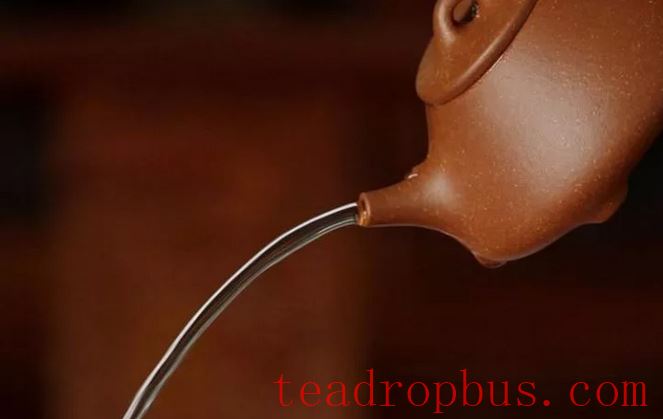
Indeed, from a practical standpoint, the drainage significantly affects the user experience of a purple clay teapot.
Firstly, whether the drainage is smooth or not relates to how quickly the Tea can be poured out. For teas that require a “one-second pour,” the resulting taste may not be satisfactory if the drainage is slow.
Secondly, purple clay Teapots often suffer from “drooling.” “Drooling” refers to the teapot not stopping the flow cleanly, leaving a few drops of tea clinging to the end of the spout after pouring, which then drip down the side of the spout to the bottom of the teapot due to gravity. Over time, this can create a noticeable stain below the spout.
Therefore, “the smoothness of the drainage” and “whether the flow stops cleanly” are two very important factors in the “functionality” of a purple clay teapot.
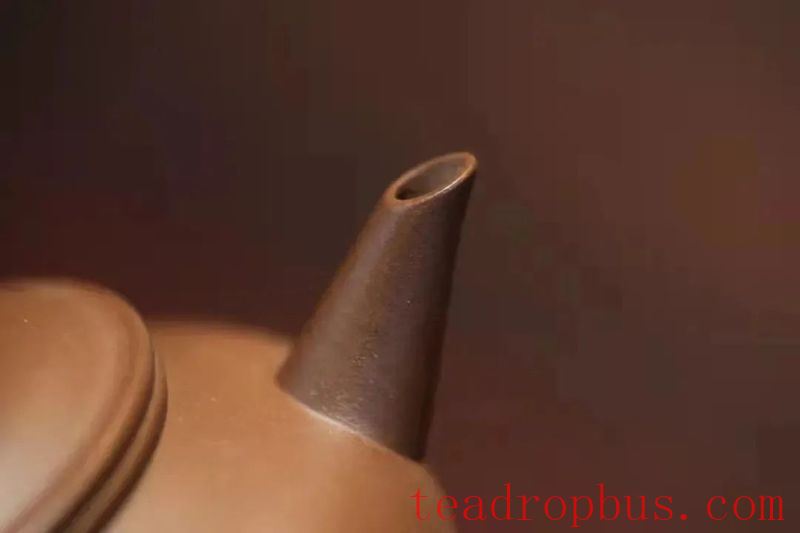
Based on my personal experience and research, I'll share some insights so that you can roughly judge the drainage ability of a purple clay teapot without having to use it yourself.
Purple clay teapots come in various shapes and forms. Among the thousands of styles, only a few are truly suitable for brewing tea and doing so effectively. Undoubtedly, the drainage of a purple clay teapot is closely related to its spout and drainage holes.
The common spouts can be simply divided into straight and curved spouts.
Straight spouts can be further divided into cannon spouts and sword spouts, while curved spouts can be divided into single-curved, double-curved, and triple-curved spouts.
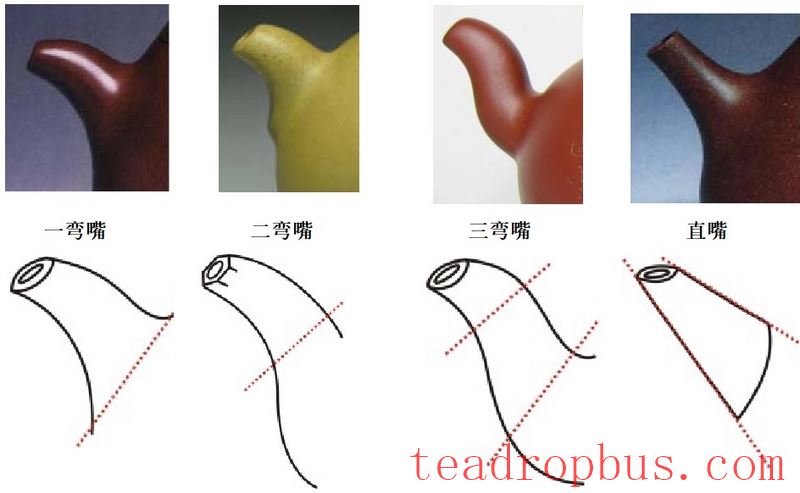
The common types of drainage holes can be divided into single hole, mesh hole, and ball hole.
Ball holes can be further divided into mold-injected ball holes, handmade ball holes, and inward-pushed ball holes.
So, without changing the shape of the teapot, the quality of drainage and flow stoppage is essentially about the combination and balance of the spout and drainage holes.
Note: Other factors affecting drainage, such as the size of the base of the spout, the position of the teapot eye, the size of the air hole in the lid, and the airtightness of the lid, are not part of today's discussion.
If we rank the spouts based on the smoothness of their drainage, it would be:
Straight (cannon/sword) spout > single-curved spout > double-curved spout > triple-curved spout
If we rank the spouts based on how cleanly they stop the flow, it would be:
Triple-curved spout > double-curved spout > single-curved spout > straight (cannon/sword) spout
Spout
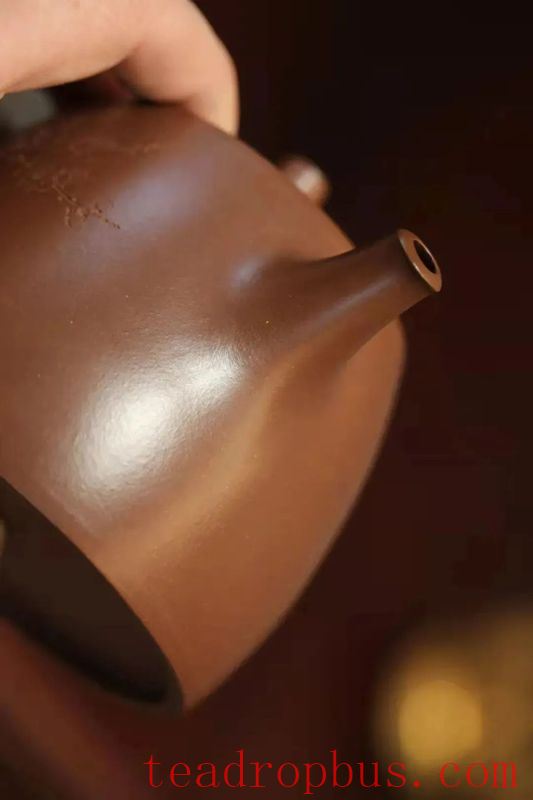
For good drainage, a straight spout is essential. The drainage from a straight spout, or cannon spout, is not something we need to worry about, but the issue of not stopping the flow cleanly with a cannon spout is an objective reality.
Typical cannon spout teapots include Shi Piao, De Zhong, and Ju Lunzhu, among others. If you stop pouring water midstream with these teapots, there will certainly be a “drooling” phenomenon. This is due to the adhesion of water to the surface, similar to the eaves during a heavy rain.
Of course, skilled teapot users may be able to stop the flow cleanly. This tests the skill of each user.
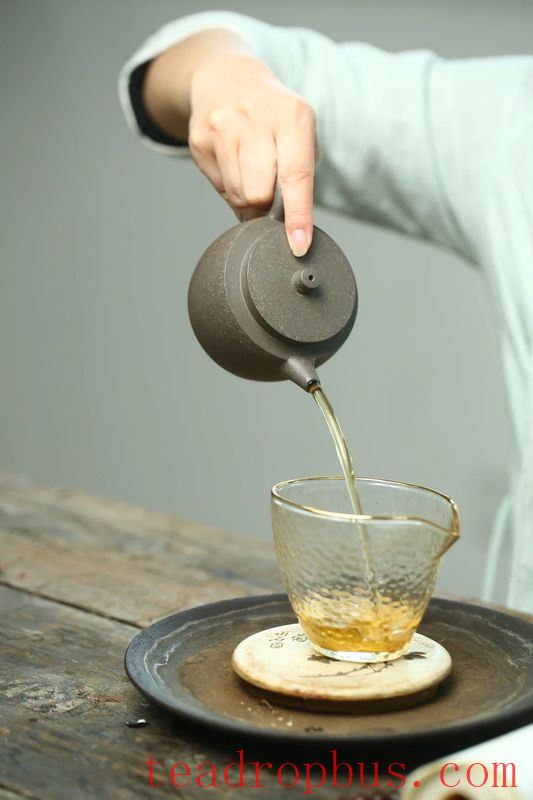
Compared to the unimpeded flow of a cannon spout, curved spouts sacrifice some of the smoothness of drainage but gain control and guidance over the flow, allowing for both drainage and flow stoppage to be executed freely.
While triple-curved and double-curved spouts have advantages in stopping the flow, those that can balance drainage and flow stoppage best are the single-curved spouts. A single-curved spout has just one curve, like the Fanggan, Duanzhi, and Lianzi teapots.
Drainage Holes
After discussing spouts, let's talk about drainage holes.
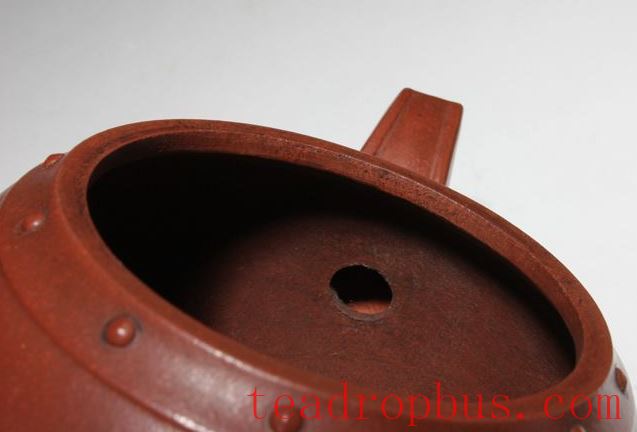
Due to early teapot-making concepts and tools, the earliest purple clay teapots had only a single hole. A single hole is relatively simple, involving digging a hole in the inner wall of the teapot. The advantage is good drainage, but the downside is that it cannot filter tea leaves, which means the functionality of the teapot is lacking.
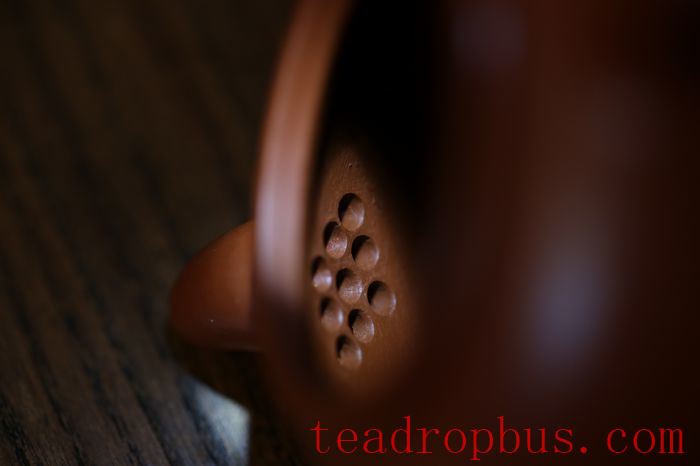
With the development of teapot-making concepts over time, senior craftsmen transformed the “copper tube” into a technique for making “mesh holes,” which is still used today and is currently the most common type of drainage hole.
Mesh drainage holes are generally arranged in a grid pattern. Common examples include seven-hole plum blossom holes and ten-hole diamond-shaped holes, with more complex configurations of fourteen, seventeen, or even twenty-one holes.
Before the Republic of China era, most purple clay teapots were either single-hole or simple mesh-hole teapots (such as four-hole mesh).
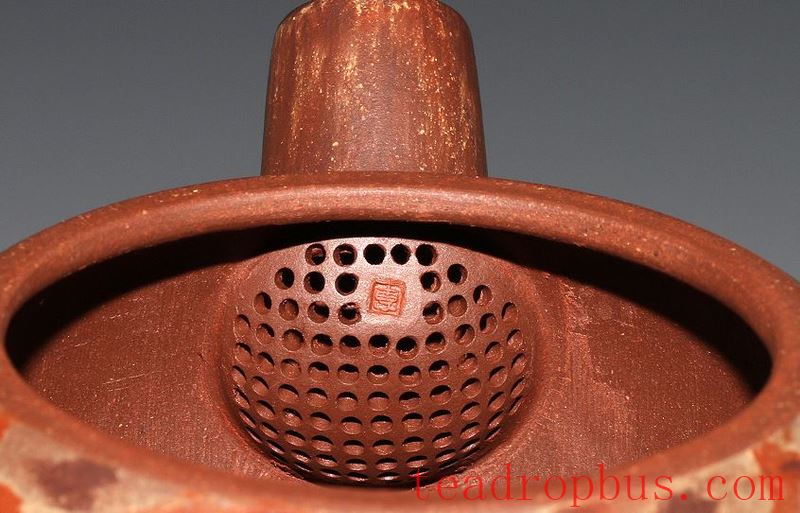
In the 1970s, when a Japanese export order was received by the purple clay factory, Japan already had its own Ceramic art system, and Japanese potters commonly used spherical filters when making teapots. Therefore, the same requirement was made for the drainage holes of this batch of teapots: spherical drainage.
The so-called spherical drainage involves attaching a half-spherical accessory with densely perforated drainage holes to the location of the single hole, transforming the drainage from a flat surface to a three-dimensional spherical shape.
The benefits are clear: better filtration of tea leaves and increased volume of drainage.
The fine filter holes and raised spherical surface ensure sufficient flow area, providing both excellent filtration and drainage effects while preventing the tea leaves from completely blocking the drainage holes. The only drawback is the higher difficulty in crafting and the fact that the teapot's capacity cannot be too small.
Teapots with meticulously crafted spherical holes do indeed drain better than those with mesh holes.
However, when spherical holes were combined with molds and slip casting, low-quality slip-cast spherical holes first appeared on mass-produced low-end teapots. The cost-effective spherical holes allowed potters to save time in creating drainage holes, with excellent drainage results, making them cheap and practical.
Thus, slip-cast, hand-pulled, and now machine-made teapots all began using spherical drainage. Over time, this gave many teapot enthusiasts the negative impression that “low-end teapots use spherical